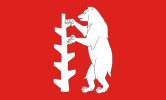Related Research Articles

Nuneaton is a large town in northern Warwickshire, England. The population in 2011 was 86,552, making it the largest town in Warwickshire.

The Daventry District is a local government district in western Northamptonshire, England. The district is named after its main town of Daventry where the council is based.

Arbury Hall is a Grade I listed country house in Nuneaton, Warwickshire, England, and the ancestral home of the Newdigate family, later the Newdigate-Newdegate and Fitzroy-Newdegate families.

Nuneaton is a constituency represented in the House of Commons of the UK Parliament since 2010 by Marcus Jones, a Conservative. Since 1997, the seat has been seen as an important national bellwether.
Sir Richard Newdigate, 1st Baronet was an English judge, landowner and politician who sat in the House of Commons from 1660.
Lieutenant-General Sir Edward Newdigate Newdegate, was a British Army officer.

Snelshall Priory was a Benedictine priory in Milton Keynes, Buckinghamshire in the United Kingdom, built around 1200. The priory was founded after Sybil d'Aungerville granted land at Tattenhoe to Lavendon Abbey, a Premonstratensian monastery of 'White canons' who most likely started a cell at Snelshall. This did not thrive and was abandoned about 1207. About 1219, the founder's son brought in Benedictine monks, increased the endowment and the new monastery began again. However Snelshall Priory paid 1 mark a year to Lavendon until 1232, at which point the Bishop of Lincoln decided that Snelshall owned its own lands and chapel. The priory accumulated various land through gifts, but even with all these grants, in 1321 when Henry Burghersh visited, it was so poor that "the monks scarcely had the necessities of life and had to beg even for these".

The remains of St Mary's Abbey, of Kenilworth, Warwickshire, England are situated in the grounds of St Nicholas' Church and in an adjacent area of Abbey Fields. Some of its ruins are above ground and some are below ground.

Charles Newdigate Newdegate was a British Conservative politician. In Hansard the spelling is Newdegate.

Bullington Priory was a priory in Bullington, Lincolnshire, England.

Deeping St James Priory was a priory in Deeping St James, Lincolnshire, England. In 1139 Baldwin Fitz Gilbert established the Benedictine Priory of Saint James at Deeping as a cell of Thorney Abbey. The cell was dissolved at the surrender of Thorney in 1539. The priory church remains as the Church of England parish church of Deeping St James and is a Grade I listed building.
Bromfield Priory was a priory in Shropshire, England, located at Bromfield near Ludlow.

Monks Kirby Priory was a priory, at first Benedictine and later Carthusian, in Monks Kirby, Warwickshire, England.
Wolston Priory was a Benedictine priory near Wolston in Warwickshire, England. The earthwork remains of the priory are a Scheduled Ancient Monument. A present grade II* listed house is based on the remains of the rectory.

Chilvers Coton is an area of the town of Nuneaton in Warwickshire, England, around one mile south of the town centre.

St Mary's Priory and Cathedral was a religious institution in Coventry, England, founded in the 12th century by transformation of the former monastery of St Mary, and destroyed during the Dissolution of the Monasteries in the early 16th century. It was located on a site north of Holy Trinity and the former St Michael's parish churches in the centre of the city, on a site bordered by Priory Row to the south, Trinity Street to the west, and the River Sherbourne to the north. Excavated remains from the west end of the cathedral are open to the public.
John Newdigate was an English politician who sat in the House of Commons from 1628 to 1629.

Chilvers Coton was a railway station on the Coventry to Nuneaton Line, which served the Chilvers Coton area of Nuneaton, south of the town centre. It opened in 1850, along with the line, and was closed in 1965 when passenger services on the route were withdrawn.
Thelsford Priory is a site listed by the Historic Buildings and Monuments Commission for England.
Sir Richard Newdigate, 2nd Baronet was an English landowner, entrepreneur, engineer, and politician who held the title of Commissioner for Assessment for Warwickshire, and served on the Warwickshire Commission of the Peace, as well as the Member of Parliament for Warwickshire for two separate terms. He also became well known for investing his estate’s wealth into expansions and mining ventures, and for large infrastructure projects.
References
- ↑ "THE PRIORY OF ARBURY". British History Online. Retrieved 5 October 2014.
Coordinates: 52°30′01″N1°30′27″W / 52.50021°N 1.50749°W
| This article about a Warwickshire building or structure is a stub. You can help Wikipedia by expanding it. |
| This article about a British Christian monastery, abbey, priory or other religious house is a stub. You can help Wikipedia by expanding it. |
